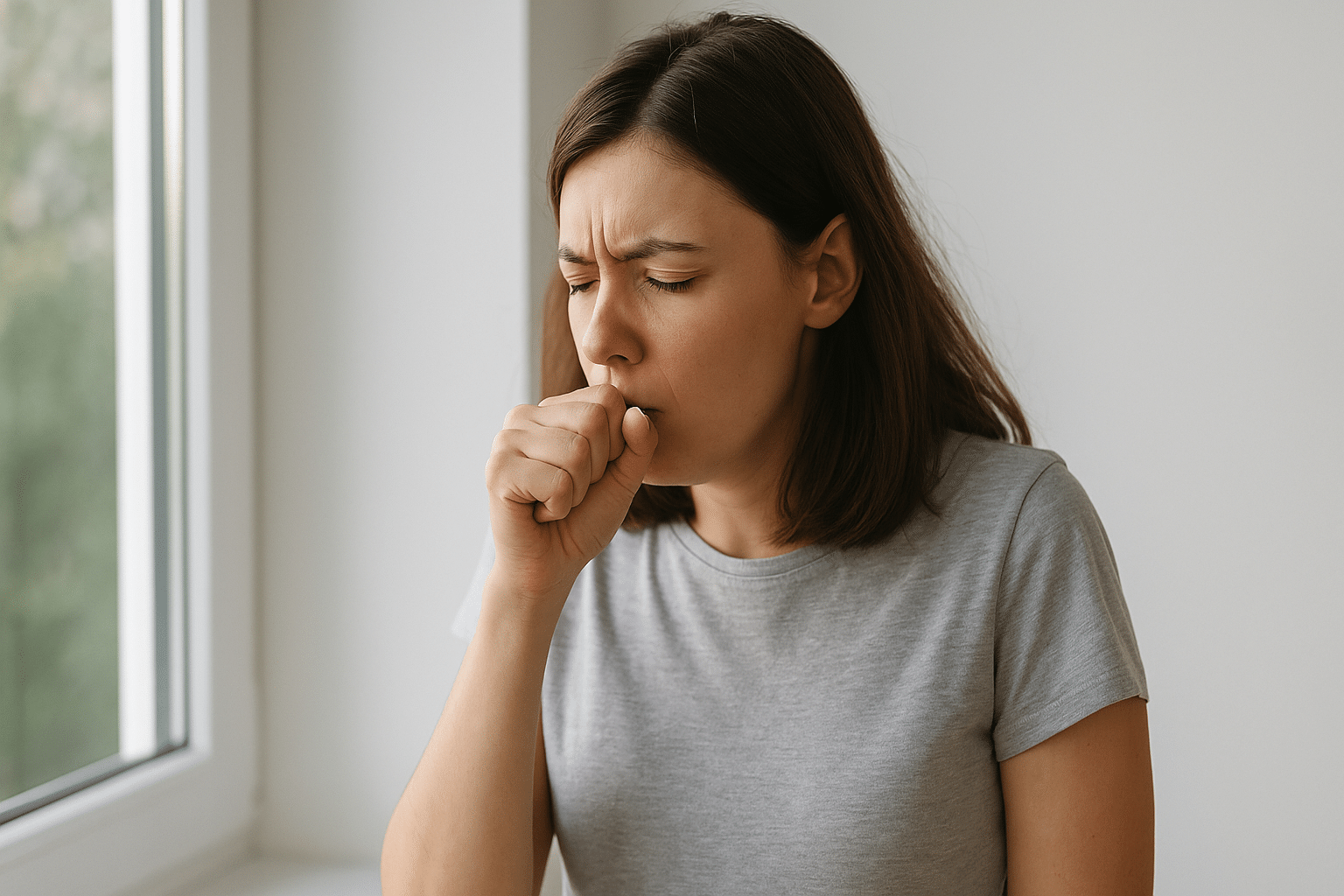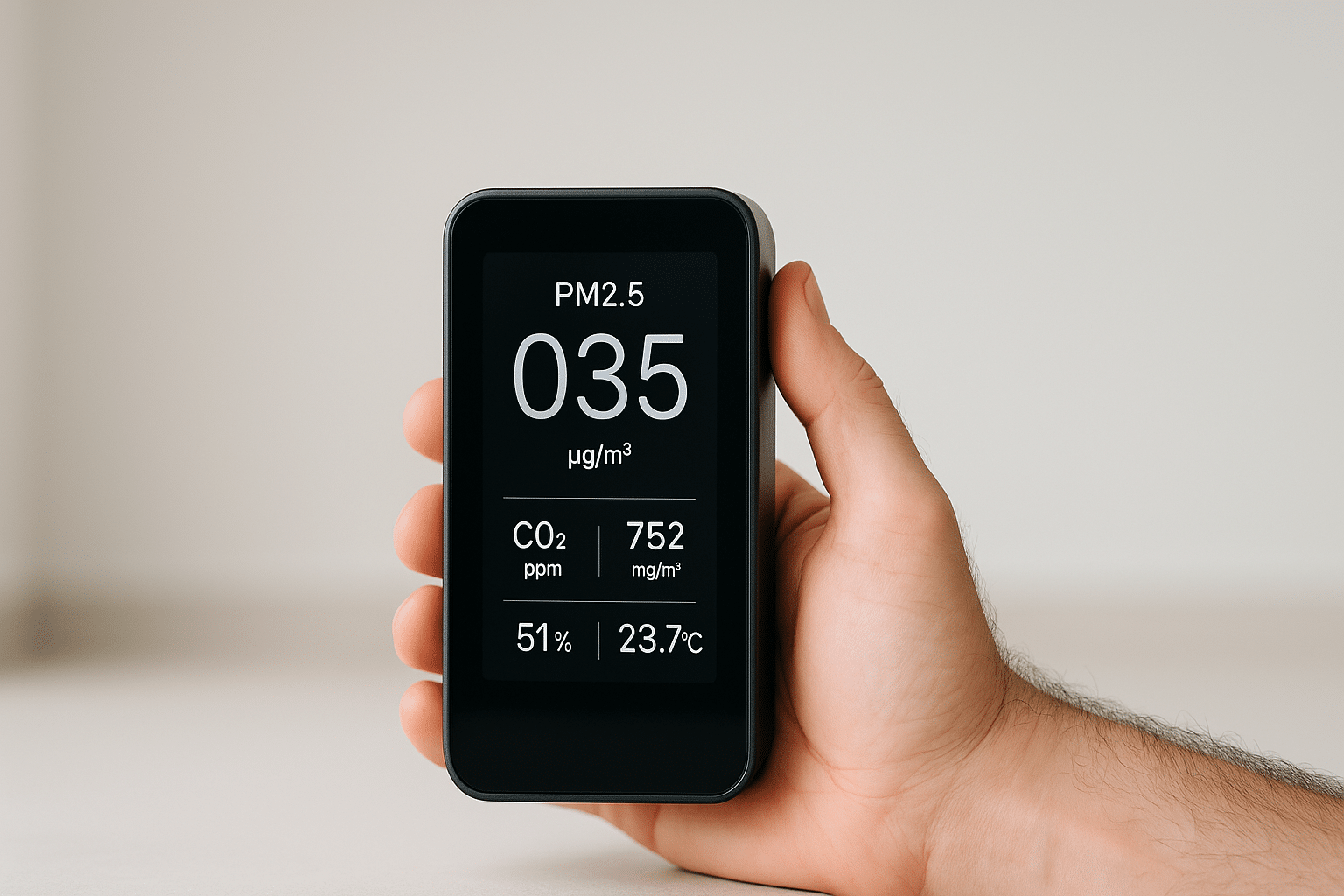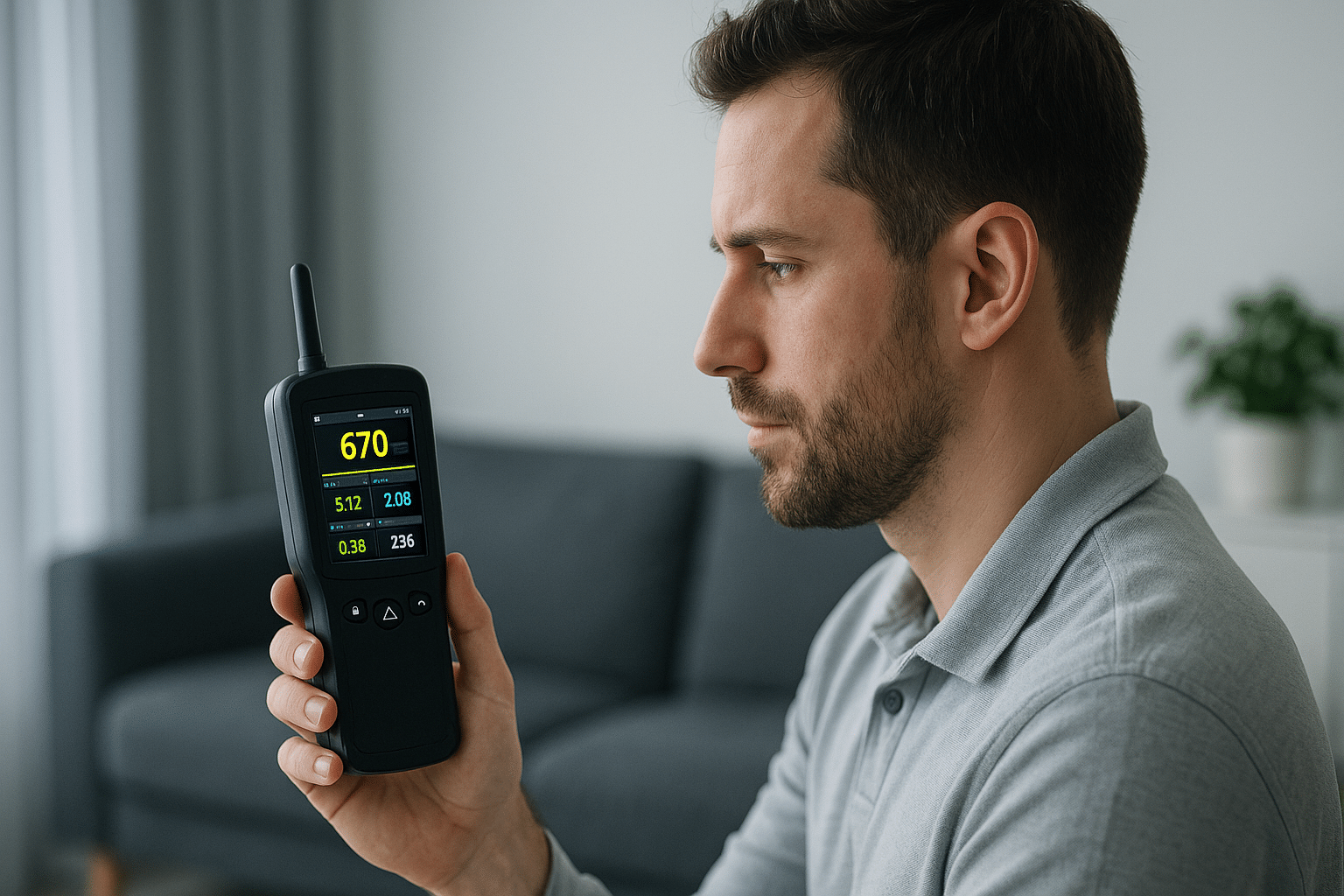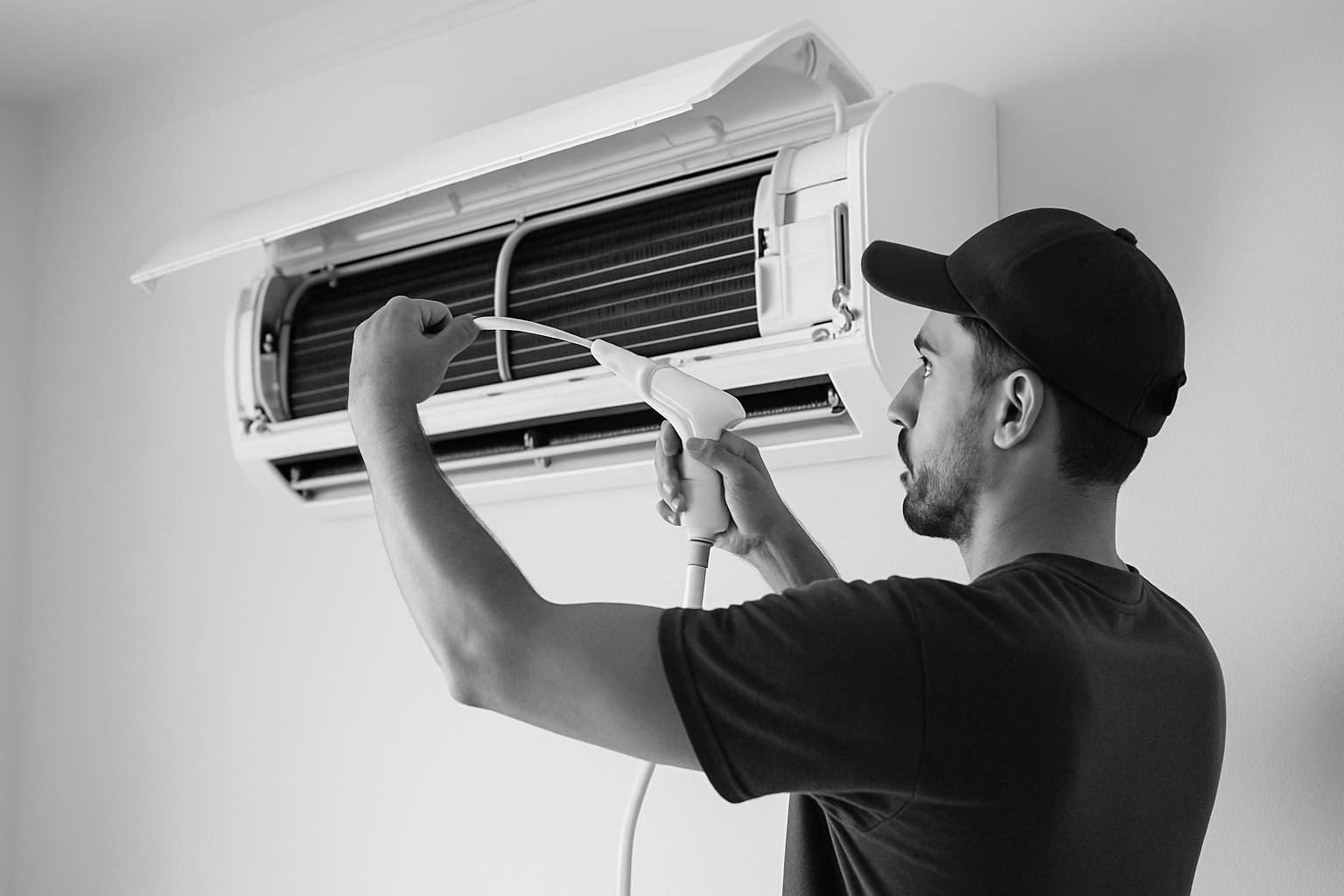
10 Critical Steps to Prevent Health Risks of Poor Indoor Air Quality in Dubai
Table of Contents
Contents
- 1 Table of Contents
- 2 Introduction
- 3 Understanding Health Risks of Poor Indoor Air Quality
- 3.1 Respiratory Complications Linked to Poor IAQ
- 3.2 Cardiovascular Effects of Indoor Pollutants
- 3.3 Neurological and Cognitive Impacts
- 3.4 Mold and Allergens: Hidden Indoor Threats
- 3.5 Common Symptoms and Warning Signs of Poor Indoor Air Quality
- 3.6 Long-Term Consequences and Vulnerable Populations
- 3.7 Regulatory Framework and Best Practices in Dubai to Mitigate Health Risks
- 4 Common Causes of Poor Indoor Air Quality
- 5 Step-by-Step AC Cleaning Solutions
- 5.1 1. Turn Off the Power
- 5.2 2. Remove and Clean Filters
- 5.3 3. Vacuum the Unit Interior
- 5.4 4. Apply Coil Cleaner
- 5.5 5. Clean the Drain Pan and Condensate Drain
- 5.6 6. Check the Blower Fan
- 5.7 7. Replace Filters if Necessary
- 5.8 8. Inspect and Seal Ducts
- 5.9 9. Reassemble and Test
- 5.10 10. Schedule Regular Maintenance
- 6 Additional Smart Tips to Improve Indoor Air
- 7 Regulations and Standards in Dubai
- 8 Conclusion and Call to Action
Introduction
The health risks of poor indoor air quality affect many residents and businesses in Dubai, especially given the widespread use of air conditioning systems. Indoor air pollutants can cause respiratory issues, allergies, and chronic diseases, making it crucial to maintain clean indoor environments. This article outlines 10 critical, actionable steps for effective AC cleaning alongside practical tips to reduce indoor air pollution and protect your health from the health risks of poor indoor air quality.
Understanding Health Risks of Poor Indoor Air Quality
Poor indoor air quality poses significant health risks, and understanding the **health risks of poor indoor air quality** is crucial, including short-term and long-term effects. Exposure to dust, mold spores, volatile organic compounds (VOCs), and other contaminants can trigger symptoms such as headaches, fatigue, throat irritation, and exacerbated asthma, making it a pressing concern in Dubai’s hot climate where buildings rely heavily on air conditioning systems.
Indoor air pollution can also increase the risk of serious conditions like chronic obstructive pulmonary disease (COPD) and cardiovascular problems. Vulnerable groups such as children, elderly individuals, and people with pre-existing respiratory conditions should pay particular attention to indoor air cleanliness.
Respiratory Complications Linked to Poor IAQ
One of the most immediate and well-documented impacts of poor indoor air quality is on the respiratory system. Pollutants like dust, tobacco smoke, VOCs from paints or cleaning agents, and mold spores irritate the respiratory tract and lungs, leading to symptoms such as coughing, wheezing, shortness of breath, and throat irritation. In extreme cases, prolonged exposure can contribute to the development or worsening of chronic respiratory conditions such as asthma, bronchitis, and chronic obstructive pulmonary disease (COPD). Addressing these issues is vital to reduce the **health risks of poor indoor air quality** in densely populated areas of Dubai.
In the context of Dubai, studies by the Dubai Health Authority (DHA) highlight rising asthma rates among children and adults, partially attributed to indoor pollution aggravated by poor ventilation in densely populated residential neighborhoods like Deira and densely packed commercial districts such as Business Bay. The DHA recommends regular IAQ monitoring and ventilation improvements in both new and existing buildings to mitigate these risks.
Cardiovascular Effects of Indoor Pollutants
Emerging research has established that the health risks of poor indoor air quality are not confined to respiratory outcomes. Pollutants such as fine particulate matter and carbon monoxide also adversely affect cardiovascular health by increasing inflammation, arterial stiffness, and blood pressure. Exposure to these pollutants has been linked to higher incidences of heart attacks, strokes, and hypertension, underscoring the serious **health risks of poor indoor air quality**.
The UAE’s Ministry of Health and Prevention (MOHAP) advocates for integrating indoor air quality guidelines within public health policy frameworks. MOHAP’s efforts focus on reducing exposure to indoor tobacco smoke and ensuring air-conditioning systems meet Dubai Municipality regulations under the UAE Fire & Life Safety Code to prevent carbon monoxide buildup and other hazards in commercial and residential buildings.
Neurological and Cognitive Impacts
Beyond respiratory and cardiovascular issues, poor indoor air quality can affect neurological function and cognitive performance. Pollutants like VOCs and carbon dioxide, commonly elevated in poorly ventilated spaces, have been associated with headaches, dizziness, concentration difficulties, and fatigue. In educational and workplace settings, such as schools in Nad Al Sheba or office towers in Dubai Marina, these effects can decrease productivity and learning outcomes, highlighting another facet of the **health risks of poor indoor air quality**.
Research published by Dubai Health & Safety authorities emphasizes the importance of maintaining IAQ standards in schools and workplaces, urging adherence to DEWA and Dubai Electricity & Water Authority indoor environment guidelines that promote ventilation criteria suitable for the local climatic conditions to improve occupant performance and reduce sick building syndrome incidents.
Mold and Allergens: Hidden Indoor Threats
Mold growth in indoor environments, resulting from moisture problems linked to air conditioning leaks or humidity spikes, contributes to the **health risks of poor indoor air quality**. Mold spores are potent allergens and can cause allergic rhinitis, sinusitis, and trigger asthma attacks. In tropical urban areas of Dubai, such as Arabian Ranches where green spaces and irrigation systems are prevalent, increased humidity indoors can foster mold proliferation if buildings aren’t properly maintained.
Apart from mold, indoor allergens like dust mites and pet dander also contribute to allergic responses. These allergens accumulate in carpets, upholstery, and bedding. The Dubai Municipality and the Dubai Electricity & Water Authority (DEWA) recommend regular professional cleaning and maintenance services for air ducts and HVAC systems to mitigate these risks, a practice supported by Dubai-based providers like Saniservice.
Common Symptoms and Warning Signs of Poor Indoor Air Quality
It’s important to recognize early symptoms associated with unhealthy indoor air to take corrective actions promptly and avert the escalating **health risks of poor indoor air quality**. These warning signs often include:
- Persistent headaches and dizziness when indoors
- Dry, itchy, or watery eyes
- Chronic coughing or throat irritation
- Increased allergy or asthma symptoms
- Fatigue or difficulty concentrating
- Unpleasant or stale odors inside homes or workplaces
If several occupants in a building experience these symptoms that improve when they leave the space, this strongly indicates poor indoor air quality conditions requiring investigation.
Long-Term Consequences and Vulnerable Populations
Long-term exposure to indoor pollutants can lead to irreversible health conditions including lung cancer, chronic respiratory diseases, cardiovascular disease, and developmental delays in children. These severe conditions highlight the serious **health risks of poor indoor air quality** for all populations. Vulnerable groups such as young children, the elderly, pregnant women, and individuals with pre-existing health conditions are especially susceptible.
In Dubai, the DHA specifically underscores the risks for children attending nurseries and schools, where indoor air quality regulations are becoming increasingly stringent. Buildings in commercial zones like Downtown Dubai and residential areas such as Medos are subject to enhanced oversight by Dubai Municipality ensuring compliance with UAE air quality regulations tailored to protect vulnerable populations’ health.
Regulatory Framework and Best Practices in Dubai to Mitigate Health Risks
Fortunately, Dubai is progressing in regulation and public awareness on indoor air quality. The Dubai Municipality enforces building codes that include ventilation, filtration, and air quality monitoring requirements in compliance with the UAE Fire & Life Safety Code. The Dubai Health Authority supports educational campaigns encouraging building managers and homeowners to monitor and improve their indoor environments consistently.
Best practices to reduce the health risks of poor indoor air quality involve a multi-faceted approach:
- Proper Ventilation: Use mechanical ventilation systems compliant with Dubai Municipality standards, especially in sealed buildings.
- Humidity Control: Maintain indoor relative humidity between 40–60%, using dehumidifiers or air conditioners as needed.
- Routine Maintenance: Frequently clean HVAC systems, air filters, and ducts with professional Dubai-based services like Saniservice to remove dust, mold, and allergens.
- Pollutant Source Control: Minimize indoors use of VOC-emitting products such as paints, adhesives, and strong cleaning agents.
- Air Purification: Employ air purifiers with HEPA filters to reduce particulate matter in residential and office environments.
By adhering to these practices alongside compliance with local regulations, residents and businesses in Dubai can significantly lower the health risks of poor indoor air quality.
Common Causes of Poor Indoor Air Quality
Understanding the root causes of poor indoor air quality helps in adopting preventive actions to mitigate the **health risks of poor indoor air quality**. In Dubai’s urban and residential settings, the following factors are common contributors:
- Dirty HVAC and AC systems: When air conditioning units are not cleaned regularly, they accumulate dust, allergens, and microbial growth.
- Indoor pollutants: Household products such as cleaning chemicals, tobacco smoke, and VOCs from paints and furniture can degrade air quality.
- Poor ventilation: Buildings designed to be energy-efficient in Dubai often restrict fresh air flow, trapping pollutants indoors.
- Humidity and moisture: Even in Dubai’s arid climate, indoor humidity from cooking and showering can encourage mold growth.
Step-by-Step AC Cleaning Solutions
Regular AC maintenance is key to controlling the health risks of poor indoor air quality. Here is a practical and effective step-by-step guide to clean air conditioning units in Dubai homes and offices:
1. Turn Off the Power
Begin by switching off the AC unit’s power to ensure safety during cleaning.
2. Remove and Clean Filters
Filters trap dust and allergens. Remove them carefully and wash with warm water and mild detergent. Rinse and let dry completely before reinstalling.
3. Vacuum the Unit Interior
Use a vacuum cleaner with a brush to remove dirt from the evaporator coil and surrounding areas. This helps reduce microbial growth inside.
4. Apply Coil Cleaner
Apply a specialized coil cleaner suitable for Dubai’s environment to dissolve accumulated grime and dust on coils. Follow product instructions carefully.
5. Clean the Drain Pan and Condensate Drain
Ensure the drainage system is clear of blockages to prevent stagnant water and mold buildup. Wipe the drain pan with a disinfectant.
6. Check the Blower Fan
Clean the blower fan blades to remove dust, enhancing airflow efficiency and reducing pollutant circulation.
7. Replace Filters if Necessary
Check the condition of filters. If damaged or excessively dirty after cleaning, replace them with high-quality ones recommended for Dubai conditions.
8. Inspect and Seal Ducts
Dust can enter through leaks in ducts. Inspect for leaks and seal with appropriate materials to maintain clean airflow.
9. Reassemble and Test
Put all parts back together and power on the AC unit. Test for smooth operation and fresh airflow.
10. Schedule Regular Maintenance
To sustain indoor air quality, schedule AC cleaning and servicing at least twice a year, ideally before summer and winter peak periods in Dubai.
For professional AC cleaning in Dubai, services like Saniservice, specialists in mitigating the health risks of poor indoor air quality, offer expert solutions tailored to local requirements and regulations.
Additional Smart Tips to Improve Indoor Air
- Increase ventilation when weather permits: Open windows in mornings or evenings to bring fresh air inside, taking care to minimize outdoor dust during sandstorms common in Dubai.
- Use indoor plants: Certain plants help absorb indoor pollutants and increase oxygen levels, making them practical additions to Dubai offices or residences.
- Avoid smoking indoors: Tobacco smoke significantly reduces indoor air quality and heightens health risks.
- Choose low-VOC products: Opt for paints, varnishes, and cleaning agents certified for low emissions relevant to UAE market standards.
- Control humidity: Use dehumidifiers if necessary to keep indoor humidity between 30-50%, preventing mold and dust mite proliferation.
- Regular cleaning: Dust and vacuum interiors frequently using HEPA-filter vacuums to reduce allergen buildup.
For comprehensive guidance on indoor air quality and HVAC standards, you can visit the National Air Duct Cleaners Association website for insights into the health risks of poor indoor air quality, which provides research-backed insights relevant internationally and adaptable to Dubai’s environment.
Regulations and Standards in Dubai
The Dubai Municipality, through its Environment Department and Dubai Health Authority (DHA), enforces regulations to ensure acceptable indoor air quality levels within commercial and residential buildings. These regulations address pollutants, HVAC maintenance, and occupant safety primarily to reduce the health risks of poor indoor air quality.
Dubai’s building codes require proper ventilation systems integrating with air conditioning units. Additionally, regular inspections and certifications are encouraged to align with Dubai Health & Safety standards. Organizations engaging in HVAC servicing, such as Saniservice in Dubai, comply with these local standards to deliver safe air environments.
Conclusion and Call to Action
Protecting yourself and your family from the health risks of poor indoor air quality is essential in Dubai’s climate and urban environment. By following these 10 critical steps for AC cleaning and adopting smart indoor air practices, you can significantly reduce pollutants and improve your wellbeing.
Don’t wait for symptoms to appear—schedule regular AC maintenance with trusted Dubai-based professionals today. Prioritize indoor air quality to create a healthier, more comfortable home or workplace.






Leave a Reply